RELG 433 - Biblical Archaeology
Course Notes
The Chalcolithic Period - ca. 4,300 BC - 3,300 BC
Images in the text are linked to larger photos - click on them to see the larger pictures.
Hover the mouse over the images to see their captions and copyright credits.
![]() Mesopotamia
Mesopotamia
The Ubaid period (6,500-3.800 BC) in Mesopotamia lasted for about 3,000 years. It started as a Pottery Neolithic culture around 6,500 BC, and developed into a chalcolithic phase.
 It originated in the southern alluvial plain of the rivers Tigris and Euphrates, and spread north, replacing the earlier Halaf, Hassuna, and Samarra cultures.
The early phase of the Ubaid culture (5,400-4,700 BC) is also known as the Eridu period, as it was centered on the city of Eridu on the shore of the Persian Gulf. Eridu was related to the Samarra culture further north. Grain was cultivated, and later (4,800-4,500 BC), at Ubaid, canals (requiring communal effort and organization) signalled the start of irrigation agriculture.
It originated in the southern alluvial plain of the rivers Tigris and Euphrates, and spread north, replacing the earlier Halaf, Hassuna, and Samarra cultures.
The early phase of the Ubaid culture (5,400-4,700 BC) is also known as the Eridu period, as it was centered on the city of Eridu on the shore of the Persian Gulf. Eridu was related to the Samarra culture further north. Grain was cultivated, and later (4,800-4,500 BC), at Ubaid, canals (requiring communal effort and organization) signalled the start of irrigation agriculture.
From 4,500-4,000 BC the Ubaid culture spread northwards, and infiltrated and supplanted the Halaf culture.
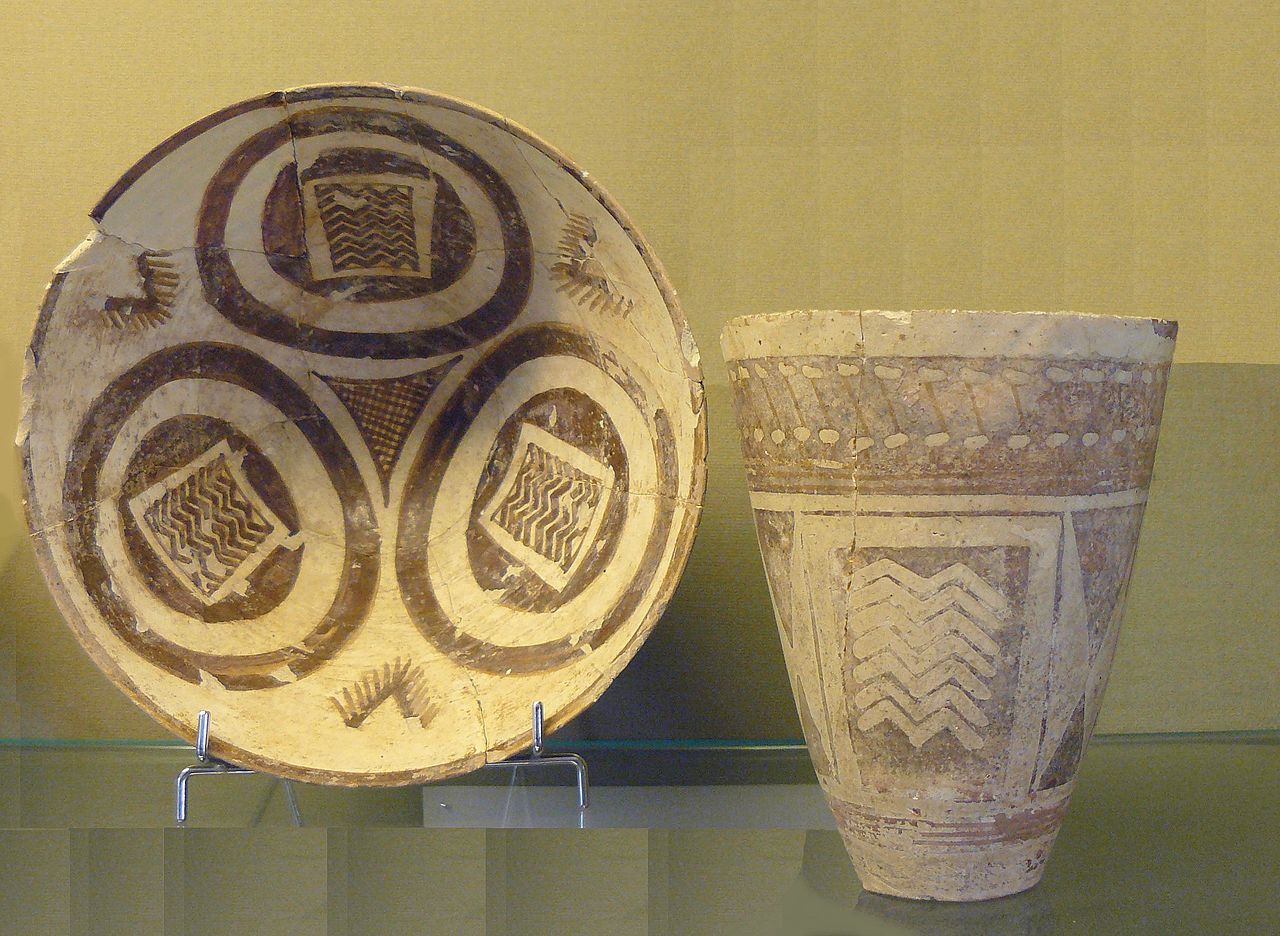 Ubaid pottery was traded westwards as far as the Mediterranean. Settlements did not have defensive walls. The houses were rectangular, built of mud-brick, with several rooms. There is some evidence for specialization - weavers, potters, metal-smiths, although most people were probably agricultural workers.
Ubaid pottery was traded westwards as far as the Mediterranean. Settlements did not have defensive walls. The houses were rectangular, built of mud-brick, with several rooms. There is some evidence for specialization - weavers, potters, metal-smiths, although most people were probably agricultural workers.
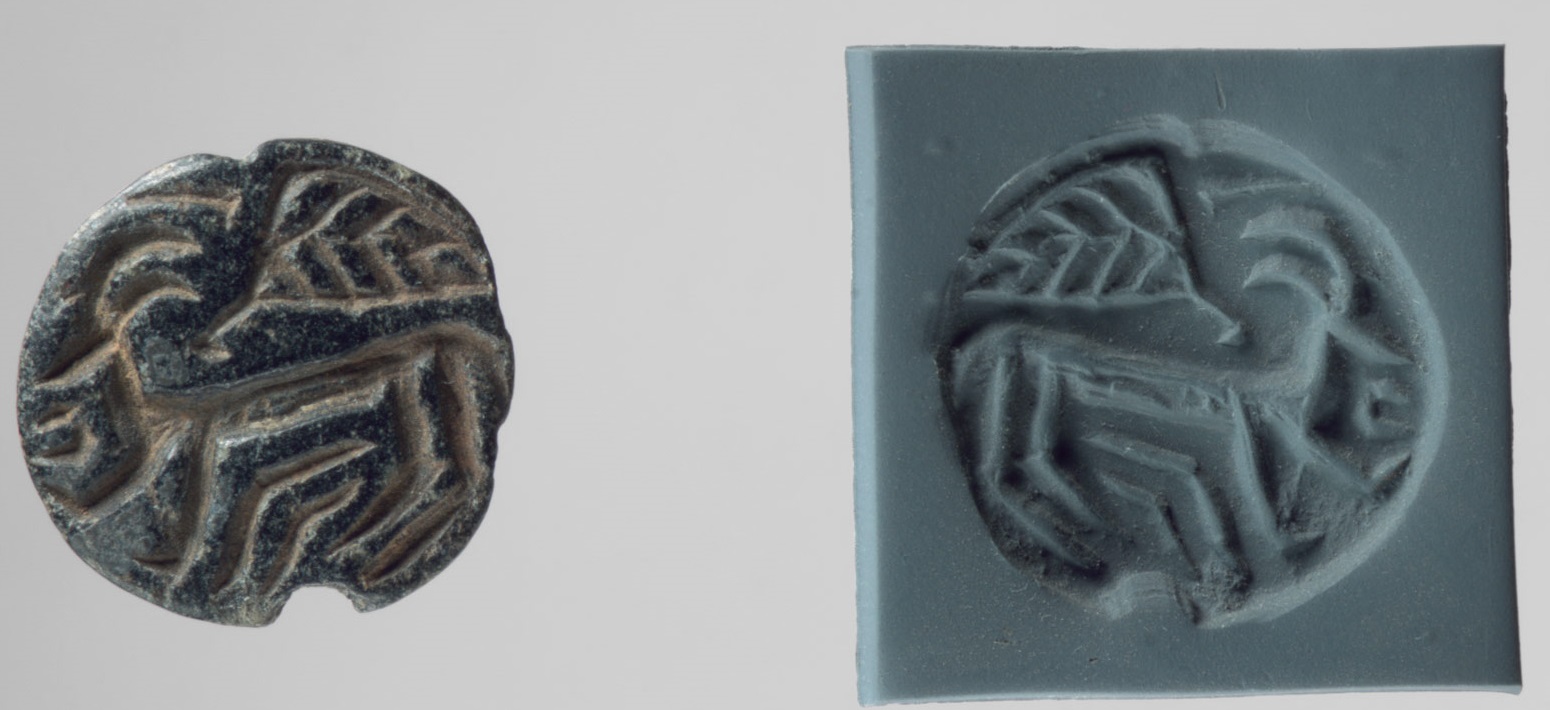 The plough was in use - it had probably been brought in from cultures to the north, but was improved to become a wooden blade which could be pulled by a draught animal. This led to an improvement in agriculture sometimes known as the 'Second Agricultural Revolution' (the first was that of the Neolithic Age).
The plough was in use - it had probably been brought in from cultures to the north, but was improved to become a wooden blade which could be pulled by a draught animal. This led to an improvement in agriculture sometimes known as the 'Second Agricultural Revolution' (the first was that of the Neolithic Age).
The date palm and other tree crops were cultivated. Improved food supplies probably led to an increase in population, and eventually to urbanization and the growth of city-states.
It is probably during this period that the wild onager was domesticated and became the donkey. As a beast of burden, the donkey made trade easier over longer distances.
The solid wheel came into use, replacing the earlier sled. The original source of the wheel is still in debate - it appears to have been invented in the north, or in eastern Europe, but once invented its use spread rapidly. The invention of spokes for wheels was later, ca. 2,000 BC.
There is evidence that society was becoming stratified, with a priestly or ruling caste living in larger dwellings.
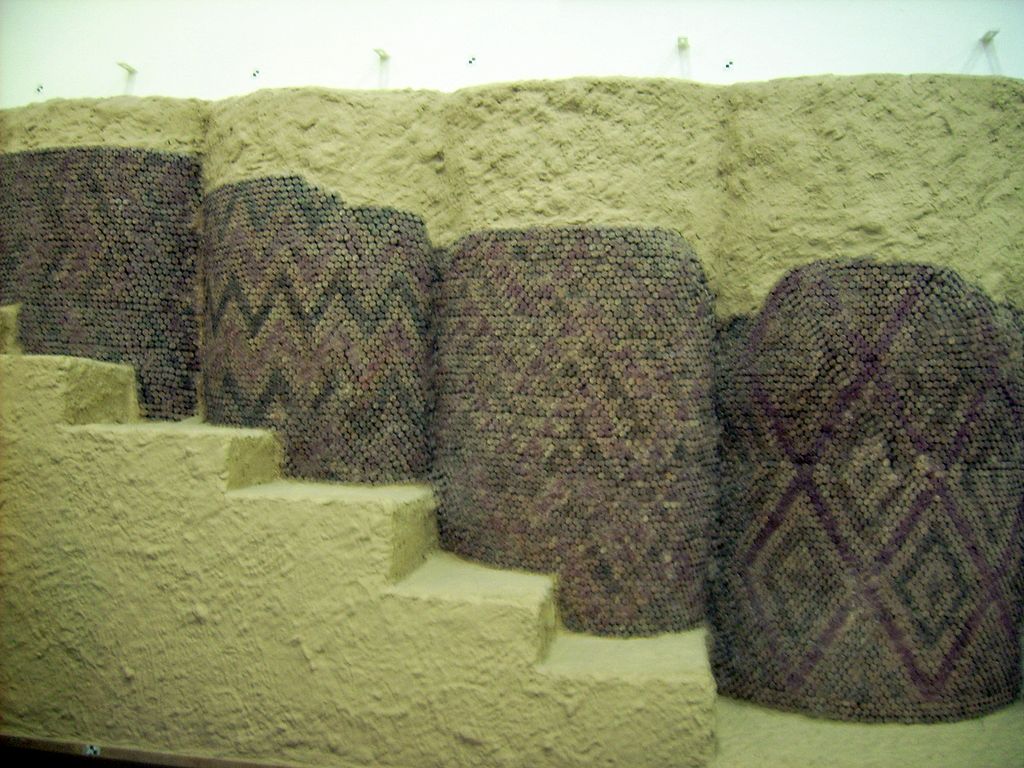 The Uruk culture (4,000-3,100 BC) developed (also known as Warka), with increasingly powerful temples.
The Uruk culture (4,000-3,100 BC) developed (also known as Warka), with increasingly powerful temples.
![]()
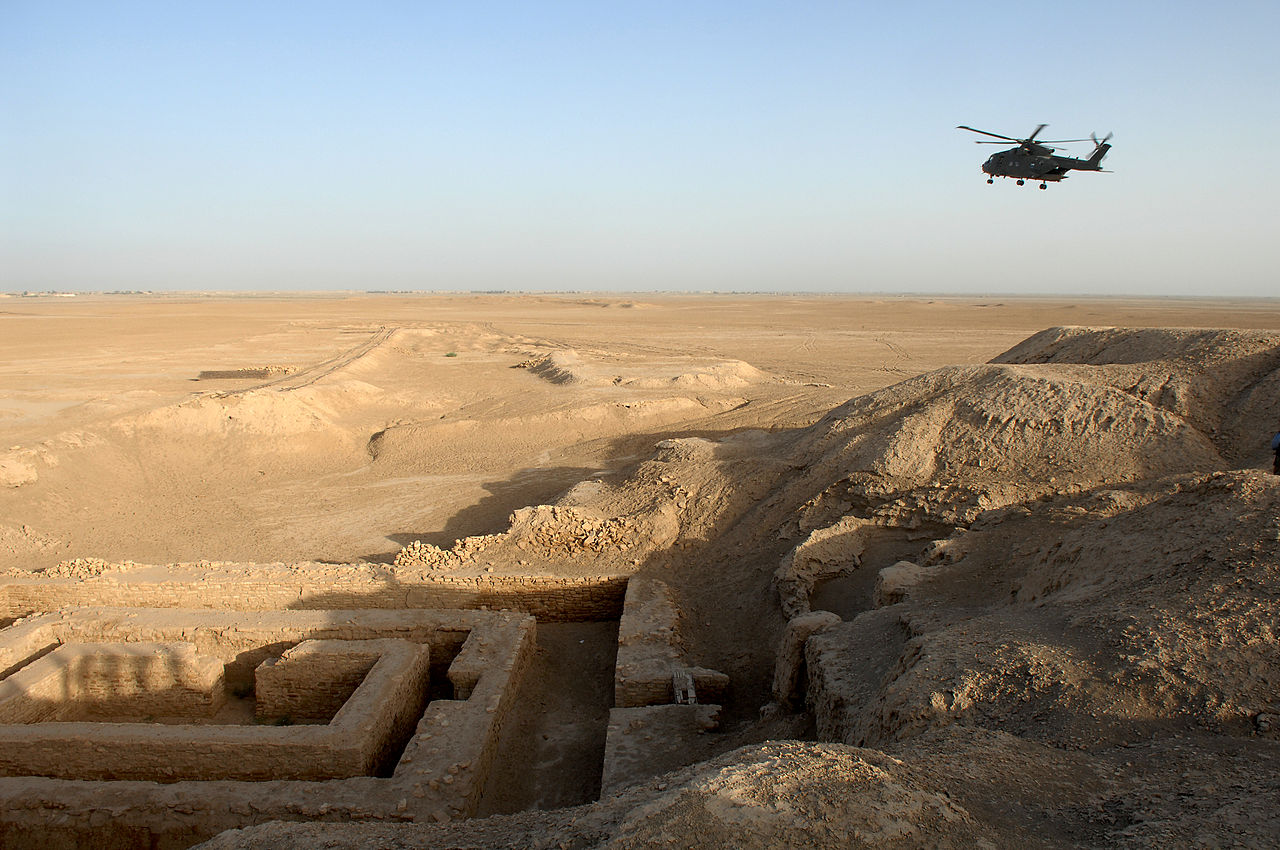

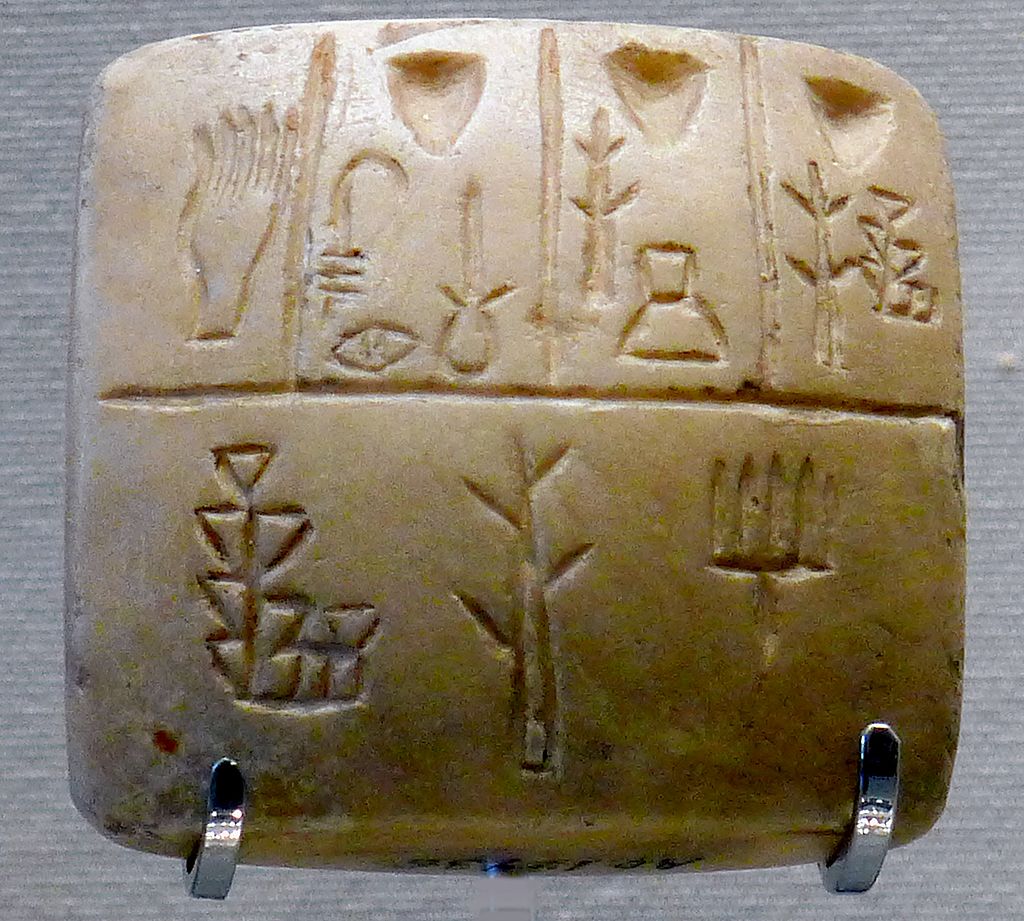
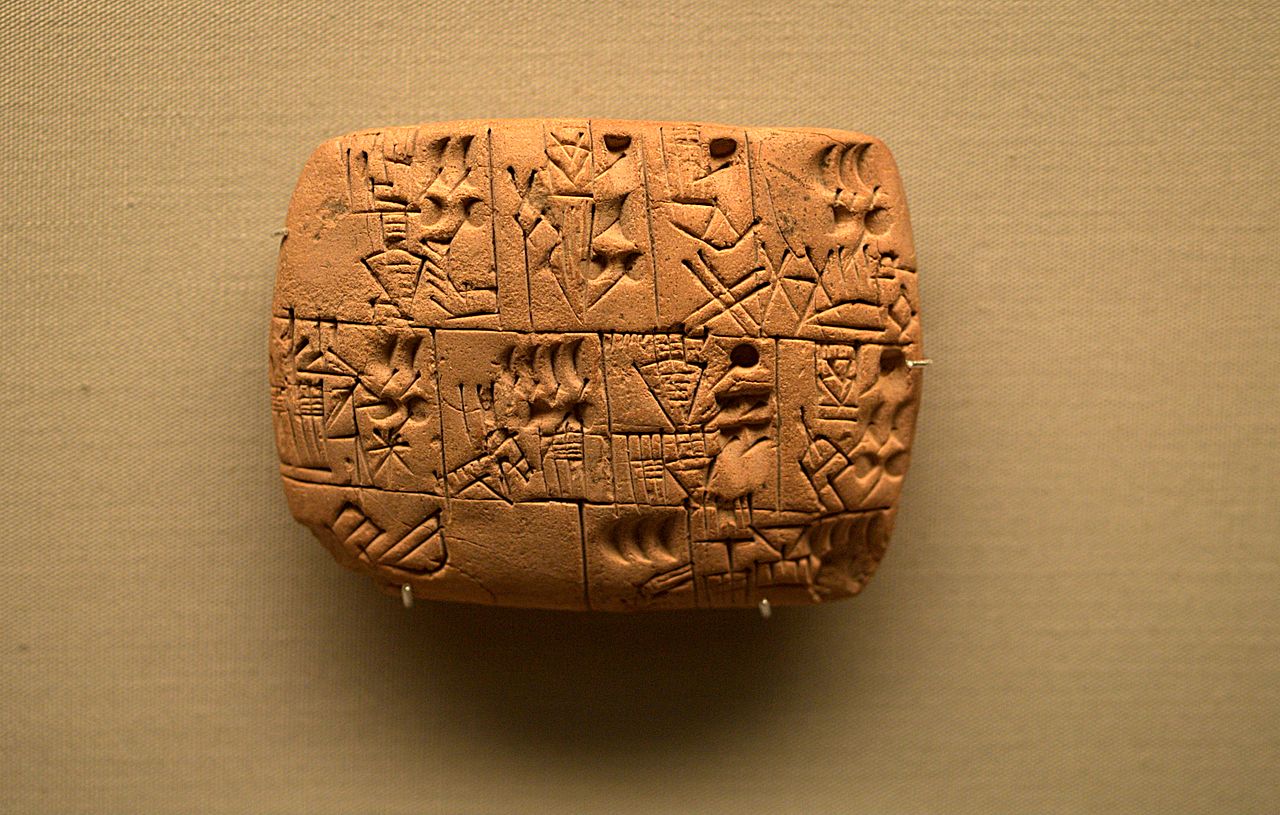 Some of the temples were decorated with colored terracotta cones pressed into the walls. The temples contained many pottery objects known as 'eye idols' because they feature a large pair of eyes, probably standing in for a worshipper.
Some of the temples were decorated with colored terracotta cones pressed into the walls. The temples contained many pottery objects known as 'eye idols' because they feature a large pair of eyes, probably standing in for a worshipper.
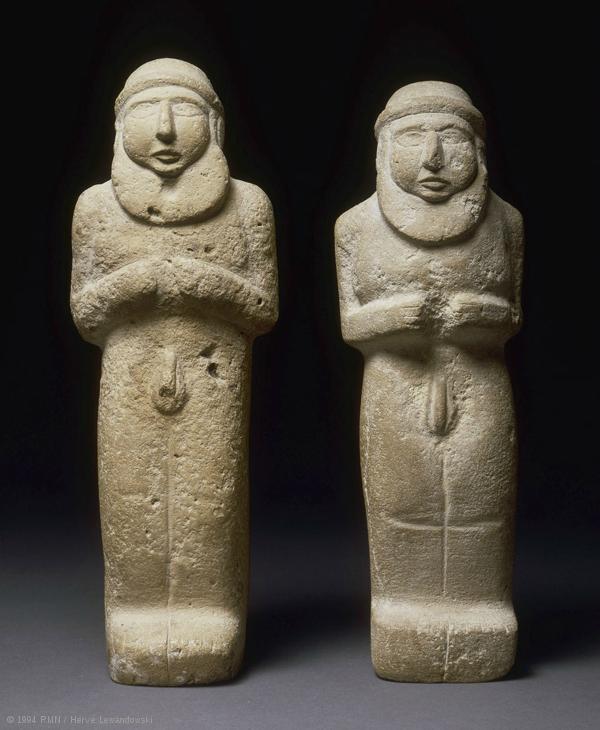
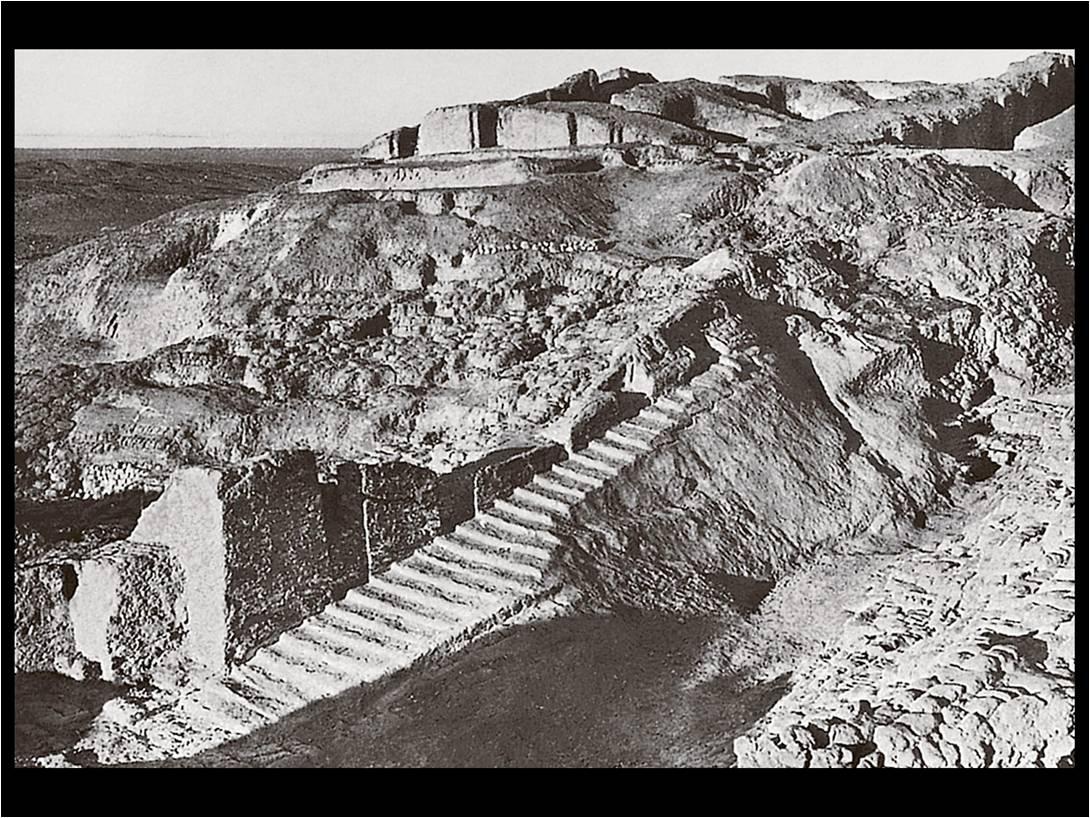 The cuneiform script came into use during the later part of the Uruk period.
The cuneiform script came into use during the later part of the Uruk period.
One of the legendary early priest/kings of Uruk was Gilgamesh, the hero of The Epic of Gilgamesh, an early account of a devastating Flood of the world.
Uruk is the most probable candidate for the city of Erech recorded in Genesis 10:10.
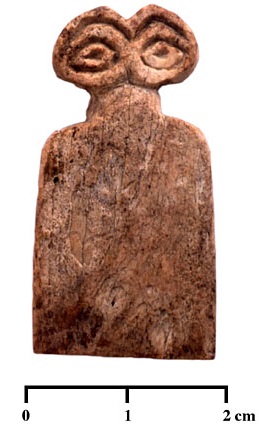 Hamoukar, to the east of Tell Brak, is a large site which shows evidence of influence from Uruk.
Hamoukar, to the east of Tell Brak, is a large site which shows evidence of influence from Uruk.
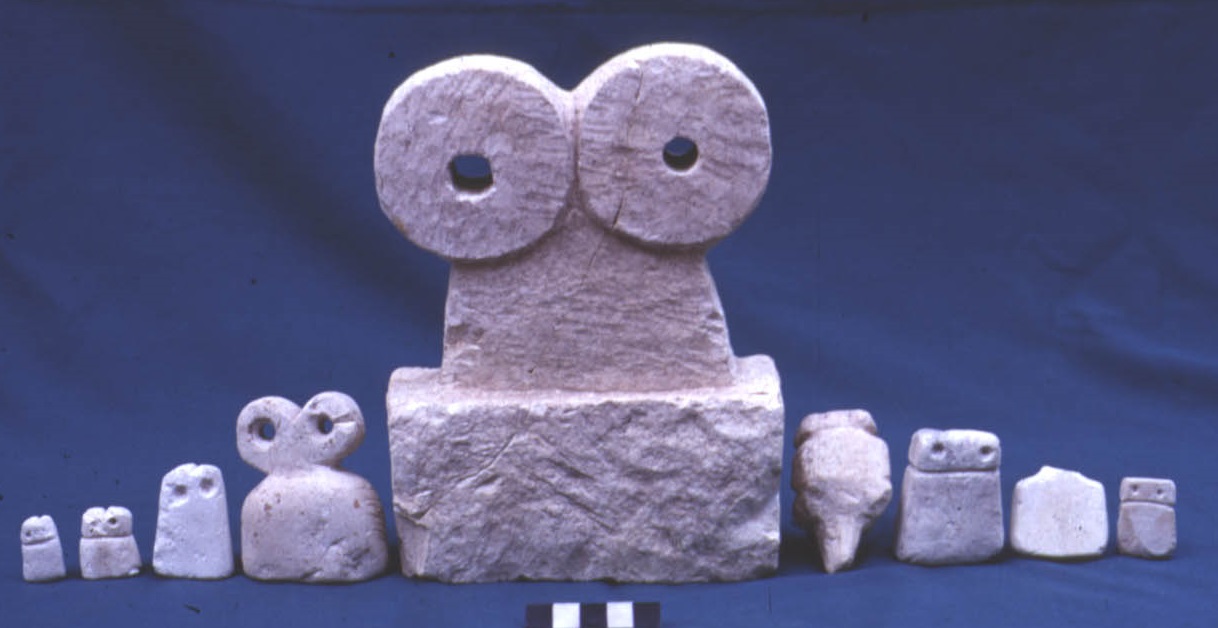 Hacinebi, in southern Anatolia, has some features typical of Uruk (clay cone decorations, cylinder seals), but also pottery of a local style probably indicating a mixed population. It may have been a colony of Uruk, or a trading post with people to the west.
Hacinebi, in southern Anatolia, has some features typical of Uruk (clay cone decorations, cylinder seals), but also pottery of a local style probably indicating a mixed population. It may have been a colony of Uruk, or a trading post with people to the west.
Sumerians settled at the site of what would become Babylon and developed cuneiform writing.
From this period there are records of disastrous floods.
![]()
![]() India
India
The earliest stages of the Indus Valley cultures began to develop, but there was not much contact with Mesopotamia and the West.
![]()
Copyright © 1999 Shirley J. Rollinson, all Rights Reserved